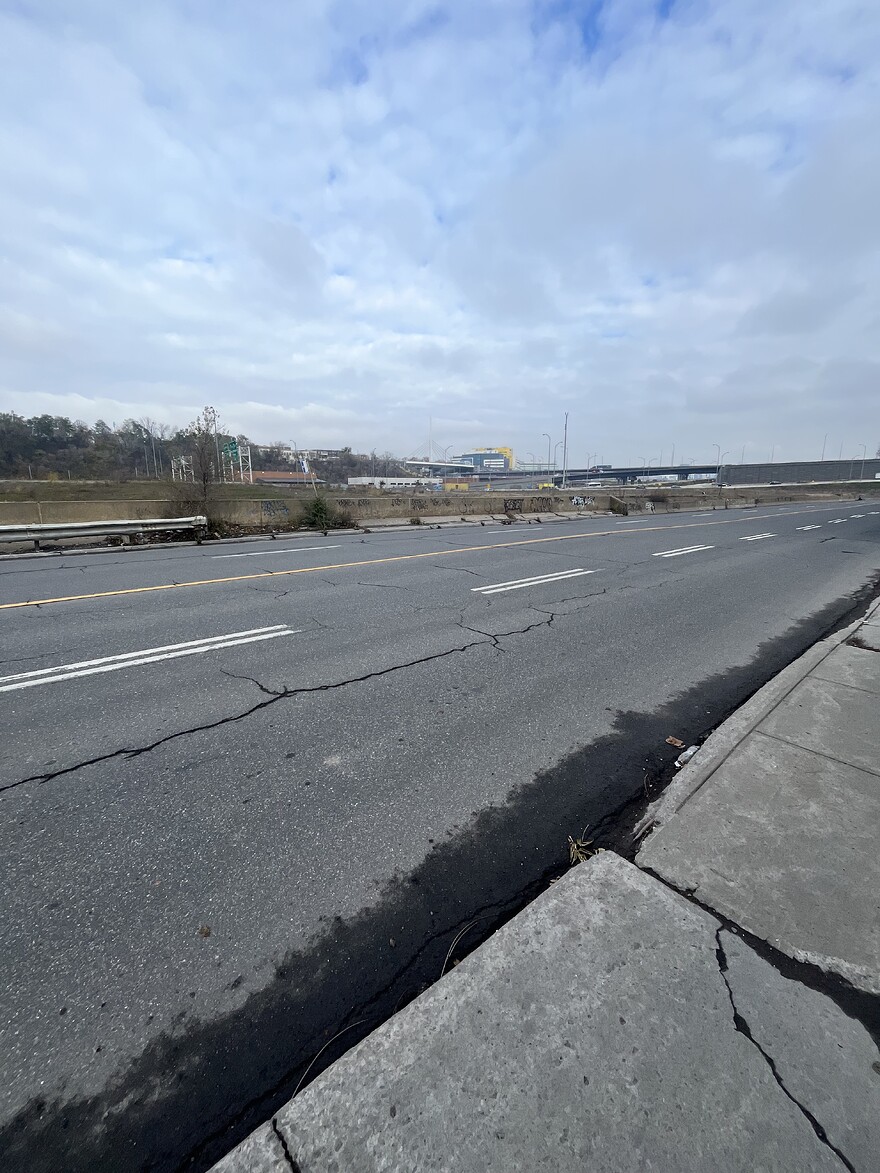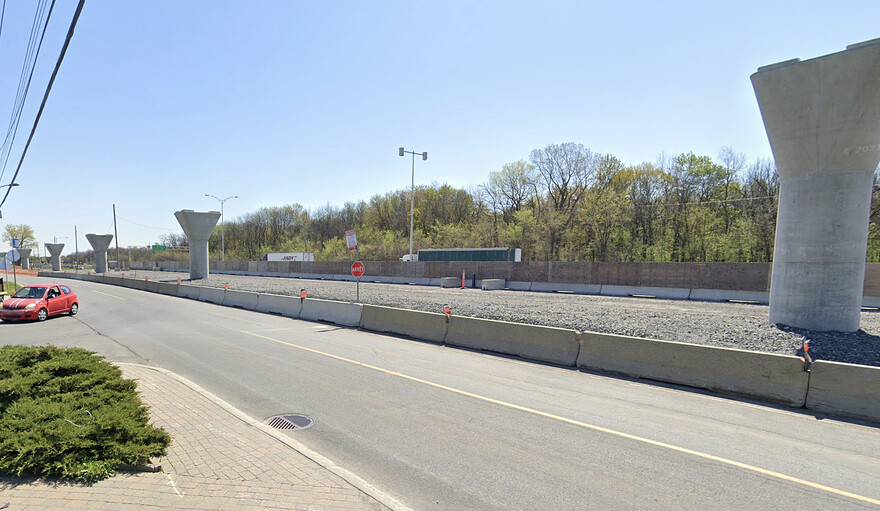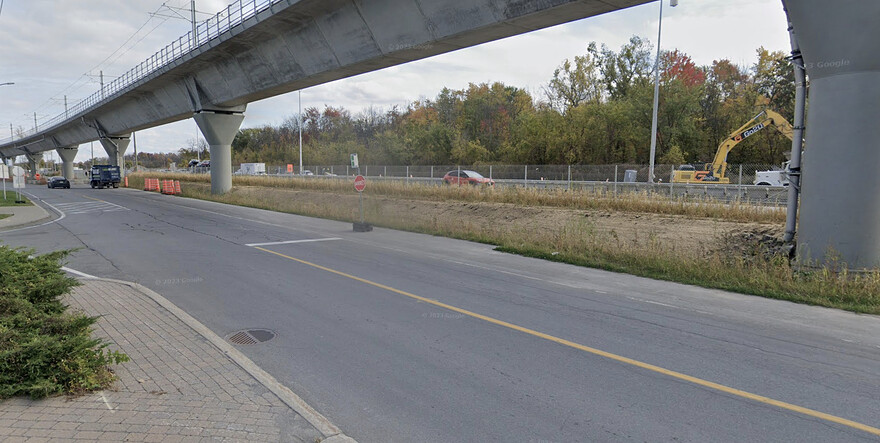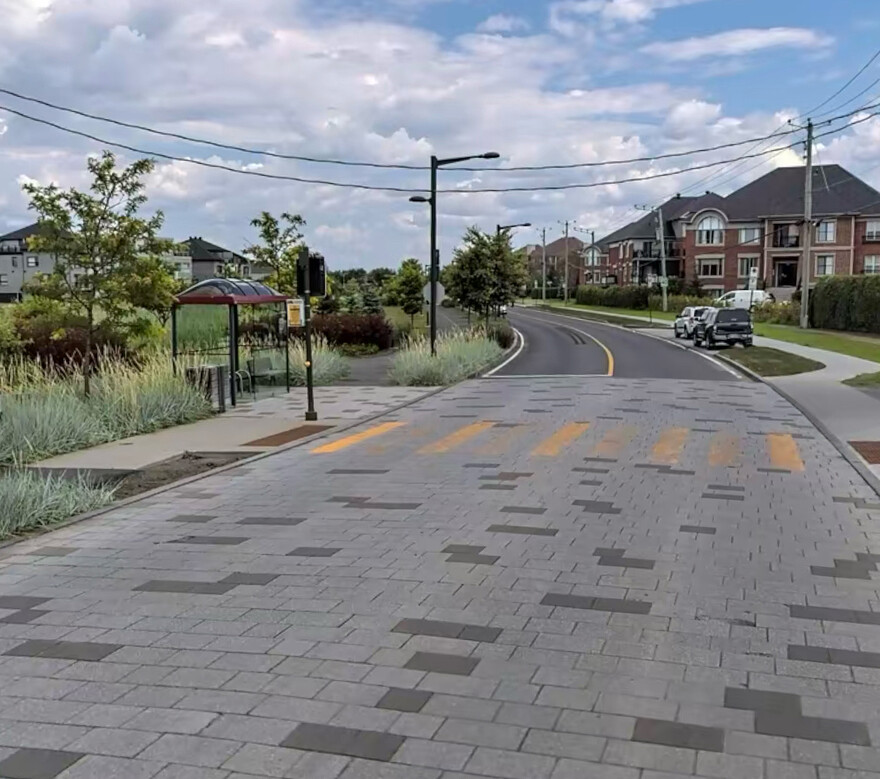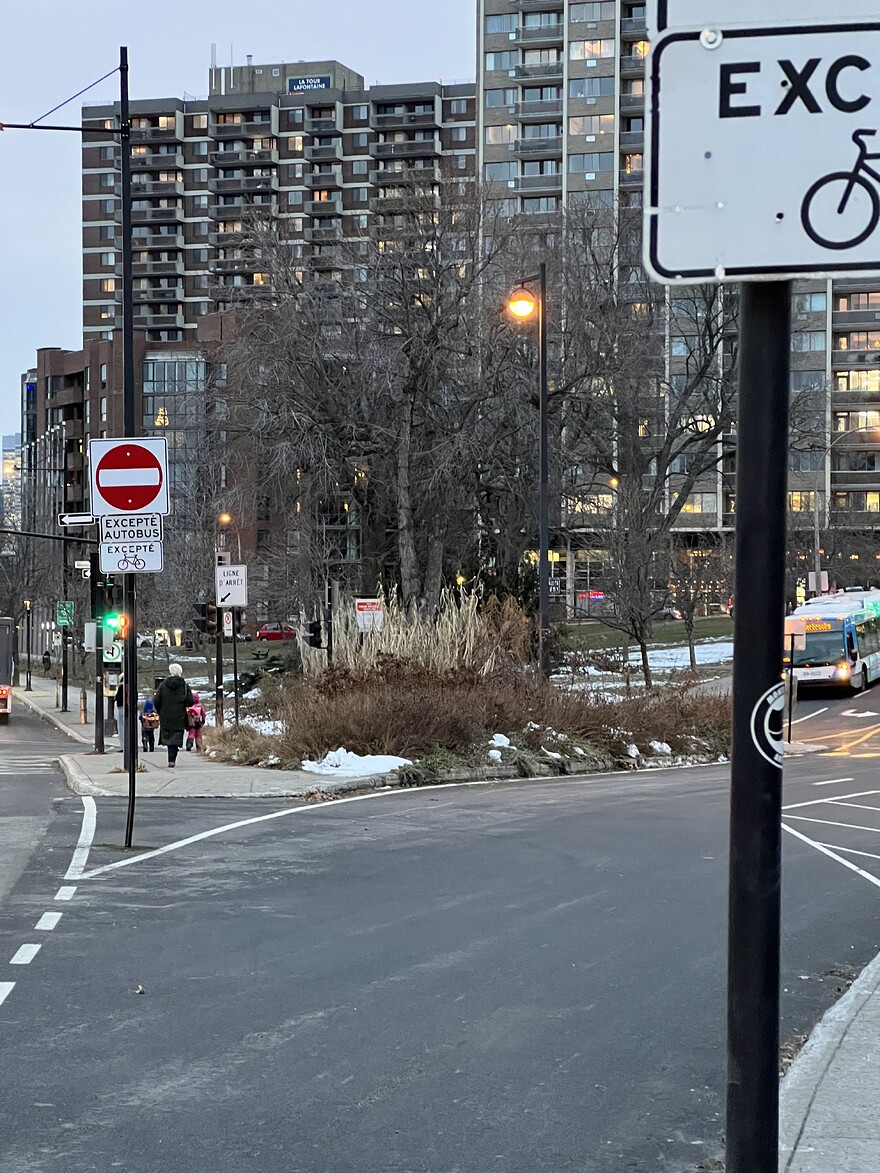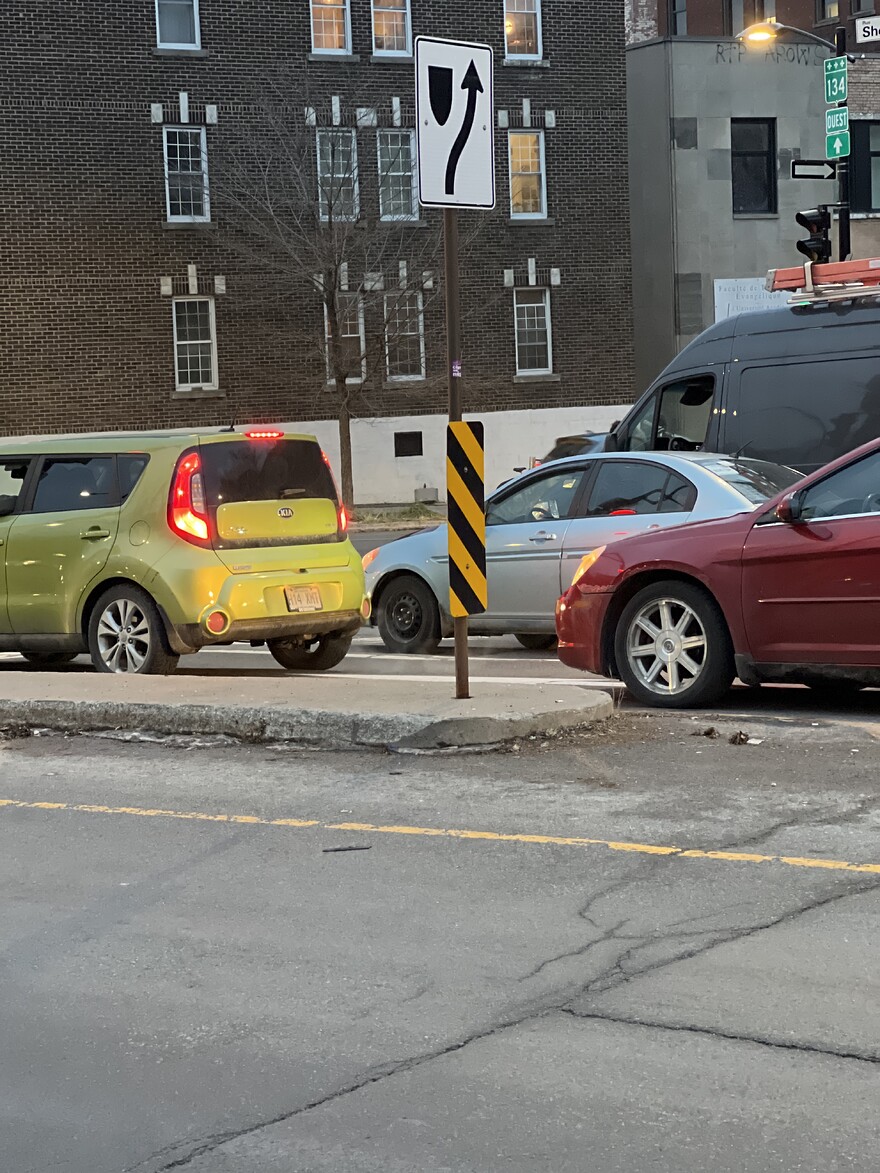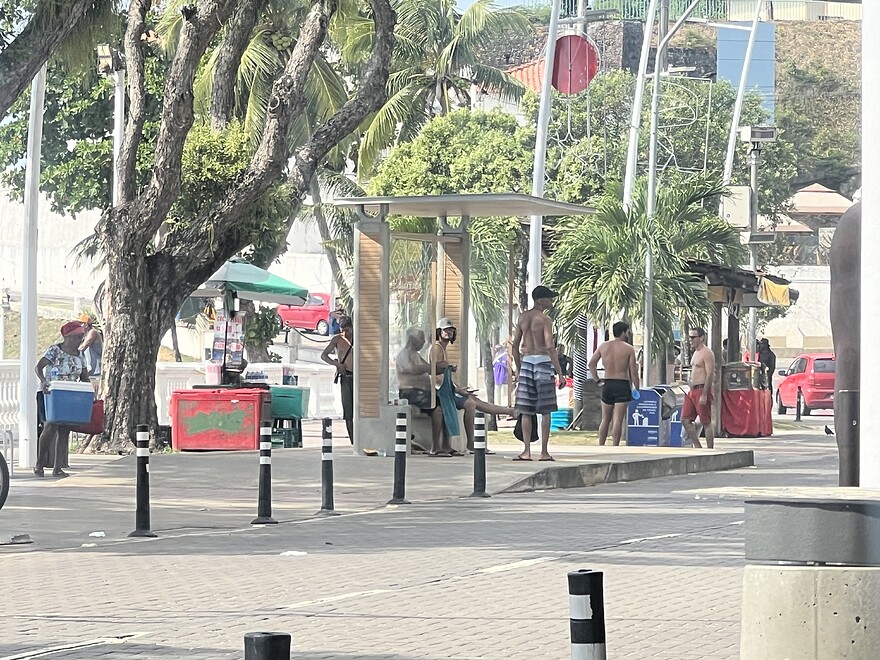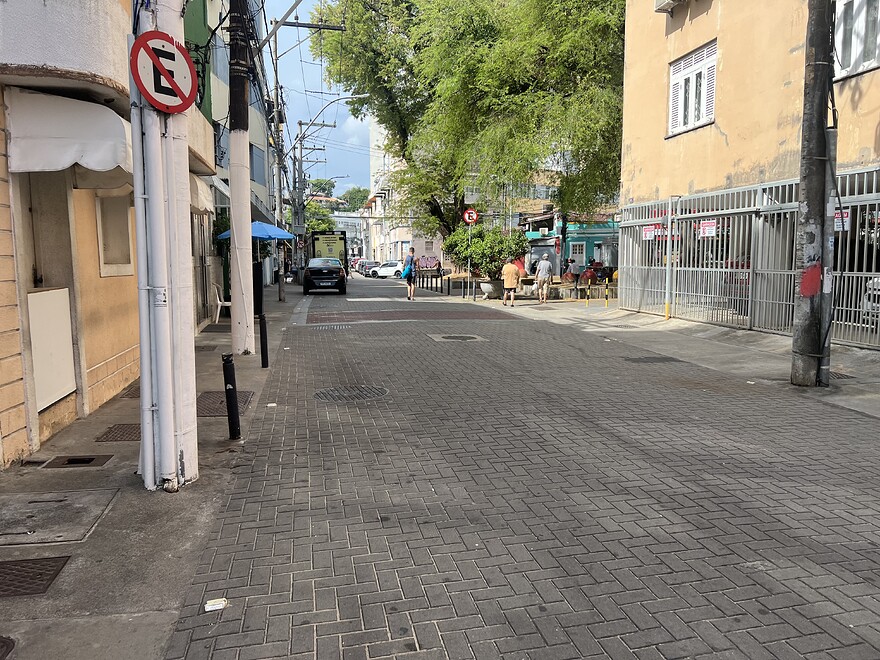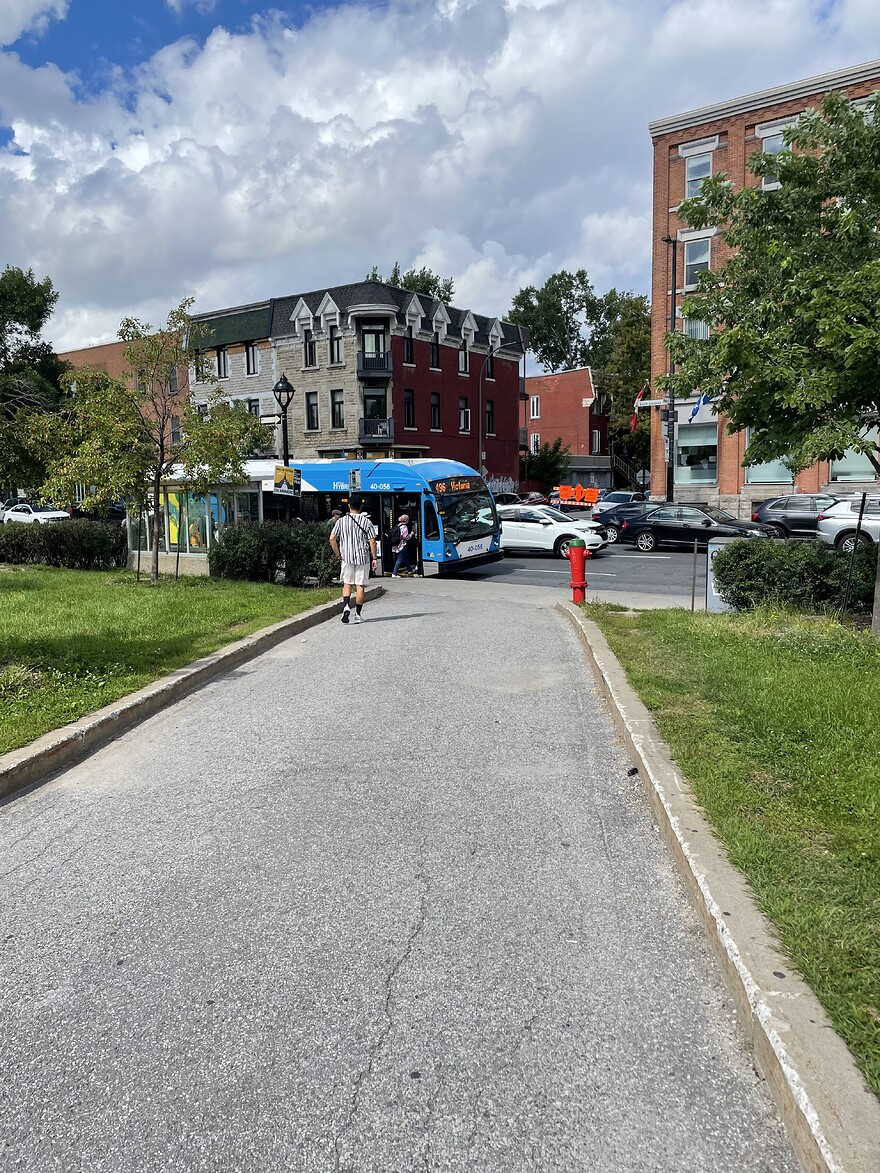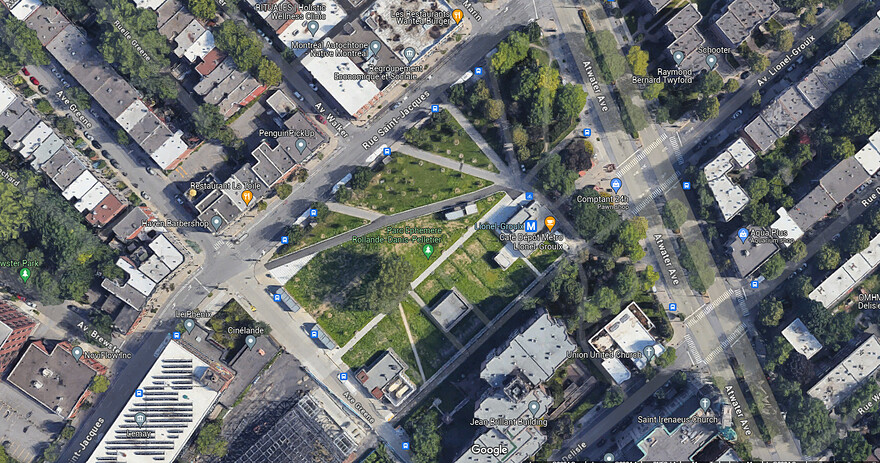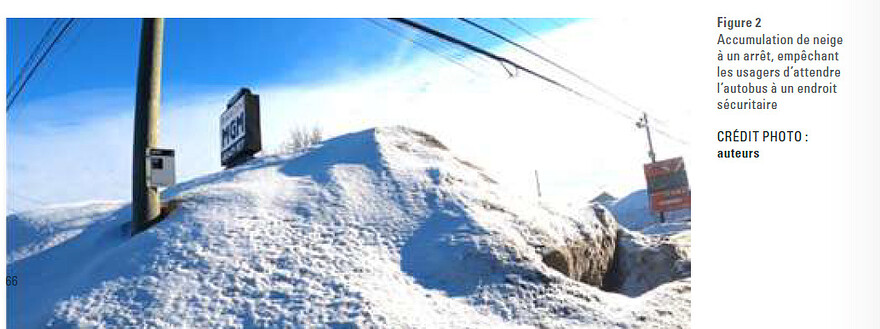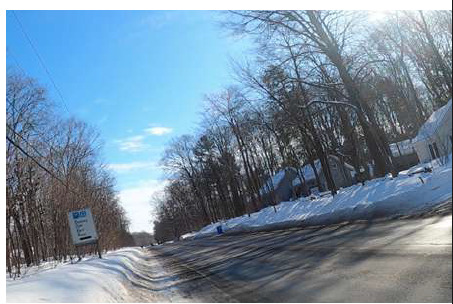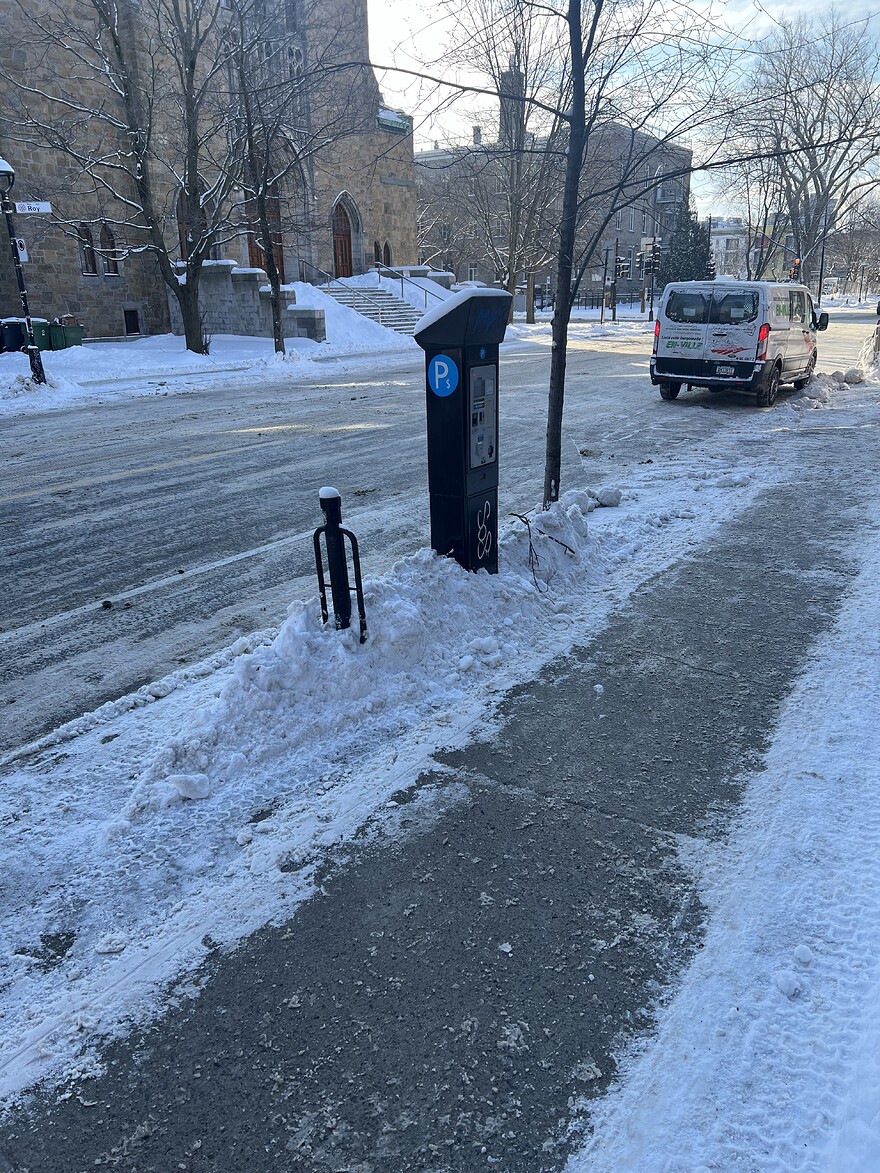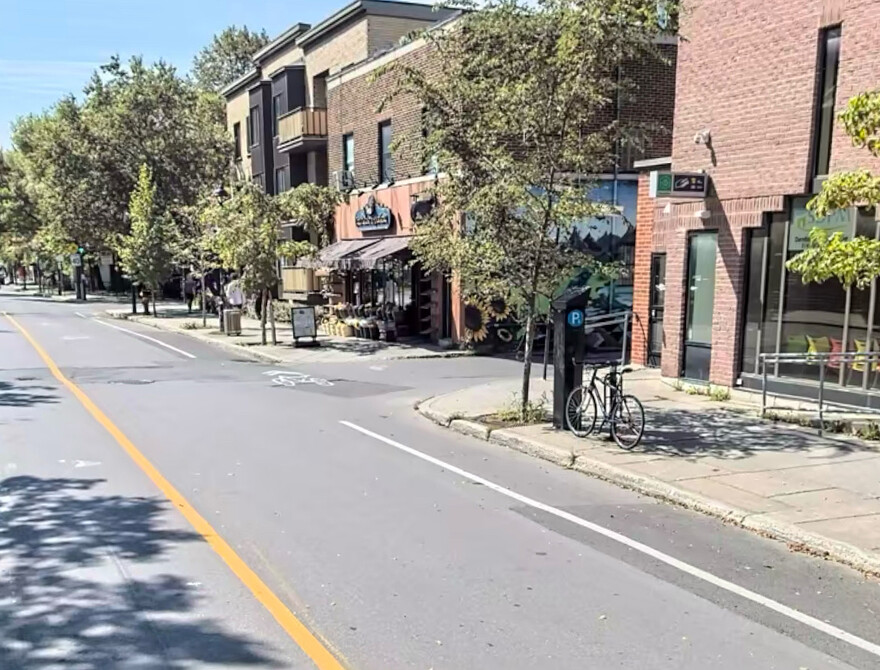Technically it is in the opposite direction of traffic, because it’s two way (with the lane going against traffic closer to the cars). Although, like you said, it’s protected it’s not necessary, especially leading up to the bridge
The red diamond usage is correct, the bike lane most adjacent to the road is against traffic.
But to make sense to drivers the sign should be on the separator not the light pole.
I bet they’re gonna use it as a snow dump in the winter then.
This newer raised crossing looks nice and is nice to cross, but the bus stop being located at it means the bus can’t lower enough for wheelchairs making it an inaccessible stop and also a bit of a pain to get onto the bus (the step is noticeably high)
This is in Brossard on Chem. des Prairies
Also the 50/50 suburban and countryside aménagement of this whole area is rather poorly thought out…
La localisation de l’arrêt fait aussi en sorte que le bus n’est pas à niveau lorsqu’il est à l’arrêt. Pour qu’il le devienne, il faudrait soit qu’il avance et bloque la traverse piétonne ou qu’il recule et dépose ses passagers dans les plate-bandes.
I don’t understand the fear of adding a grocery store or dep in these areas, just a small one without a massive parking lot which would encourage more local travel. Instead people have to drive to DIX30…
Some grocery owners/managers still think that you need a car to buy groceries…
The other sign was finally added.
Something to note is even though this sign is on the road, there isn’t the yellow and black sign on the bottom section, like they have on the new pedestrian islands on Rachel nearby, or further down on Sherbrooke:
I’m visiting Salvador Brazil and they do this correctly, the bus stop is raised while the rest of the street is continuous pedestrian priority (similar to Duluth):
Vu dans mon fil Twitter, ce livre qui va sortir en juin 2024
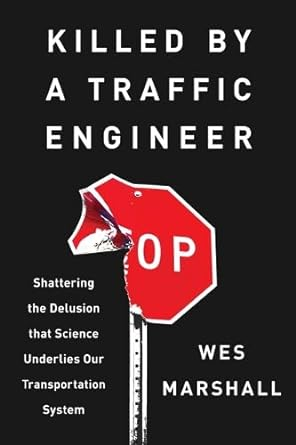
In the US we are nearing four million road deaths since we began counting them in 1899. The numbers are getting worse in recent years, yet we continue to accept these deaths as part of doing business. There has been no examination of why we engineer roads that are literally killing us.
Fixing the carnage on our roadways requires a change in mindset and a dramatic transformation of transportation. This goes for traffic engineers in particular because they are still the ones in charge of our streets.
In Killed by a Traffic Engineer , civil engineering professor Wes Marshall shines a spotlight on how little science there is behind the way that our streets are engineered, which leaves safety as an afterthought. While traffic engineers are not trying to cause deliberate harm to anyone, he explains, they are guilty of creating a transportation system whose designs remain largely based on plausible, but unproven, conjecture.
Thoroughly researched and compellingly written, Killed by a Traffic Engineer shows how traffic engineering “research” is outdated and unexamined (at its best) and often steered by an industry and culture considering only how to get from point A to B the fastest way possible, to the detriment of safety, quality of life, equality, and planetary health. Marshall examines our need for speed and how traffic engineers disconnected it from safety, the focus on capacity and how it influences design, blaming human error, relying on faulty data, how liability drives reporting, measuring road safety outcomes, and the education (and reeducation) of traffic engineers.
Killed by a Traffic Engineer is ultimately hopeful about what is possible once we shift our thinking and demand streets engineered for the safety of people, both outside and inside of cars. It will make you look at your city and streets—and traffic engineers— in a new light and inspire you to take action.
C’est une vielle photo, mais je n’ai jamais compris que la STM ait placé l’arrêt de la 496 directement dans la traverse piétonne de la rue Walker à la sortie de la station Lionel-Groulx.
Il n’y a pas de traverse sécurisée à la rue Walker.
Il y a un chemin qui mène au coin de l’intersection Saint-Jacques/Greene
mais on peut voir une ligne de désir entre les deux abris-bus
.tnemelanif tiordne’l à sim été a uaennap ec is ednamed em eJ
Haha!
Il a resté à l’envers jusqu’à l’enlèvement après le Grand prix.
Ça me renverse…
